20+ SAMPLE Buyer Persona
-
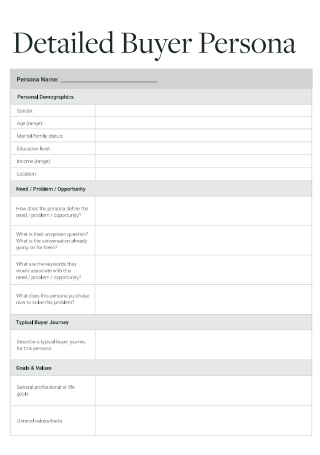
Detailed Buyer Persona
download now -
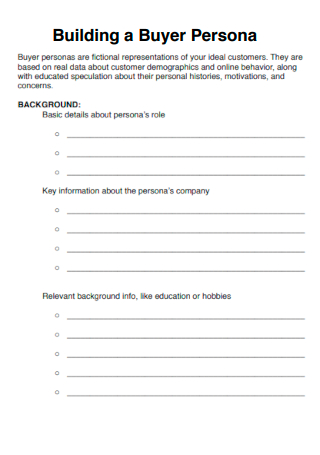
Building a Buyer Persona
download now -
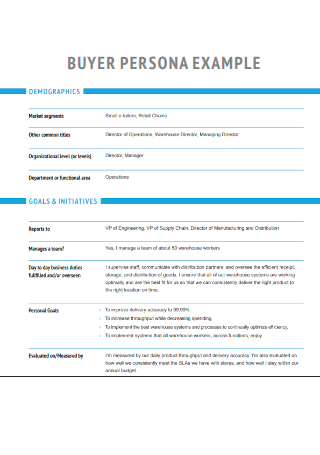
Example Buyer Persona
download now -
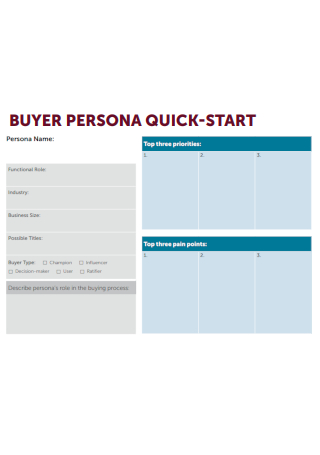
Buyer Persona Quick Start
download now -
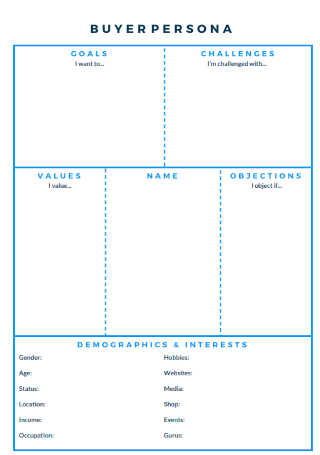
Sample Buyer Persona
download now -
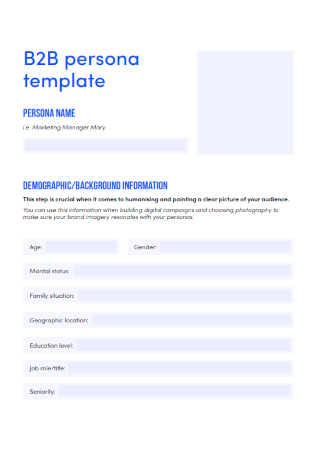
Buyer to Buyer Persona
download now -
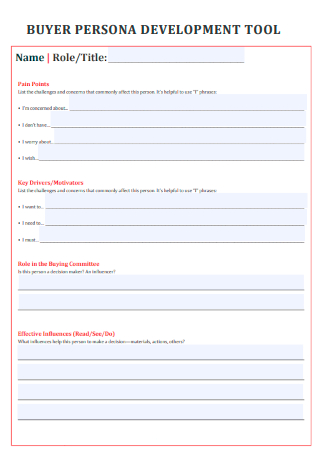
Buyer Persona Development Tool
download now -
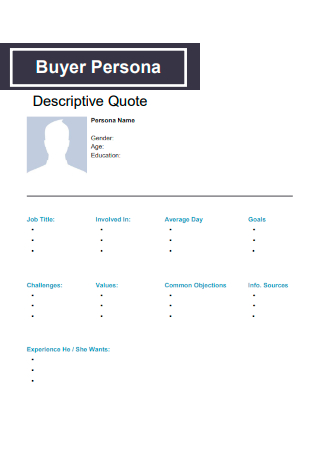
Buyer Persona Descriptive Quote
download now -
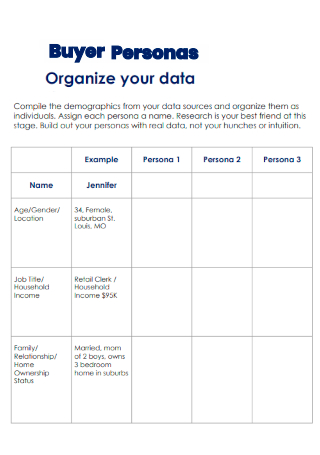
Buyer Persona Organize Your Data
download now -
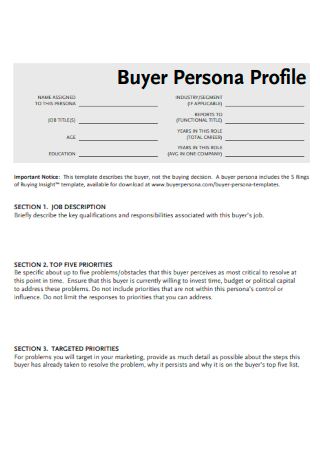
Buyer Persona Profile
download now -

Buyer Persona Worksheet
download now -
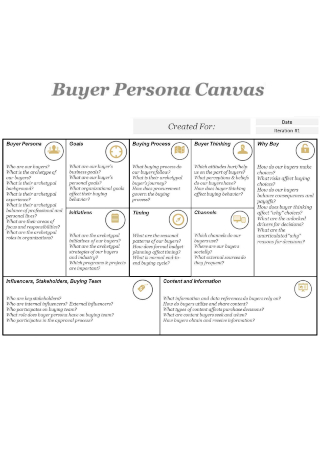
Buyer Persona Canvas
download now -
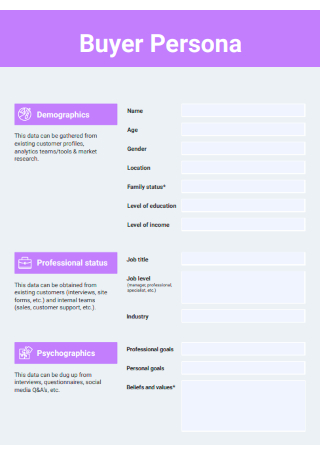
Basic Buyer Persona
download now -
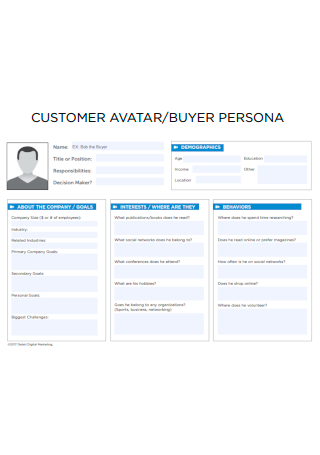
Customer Avatar & Buyer Persona
download now -
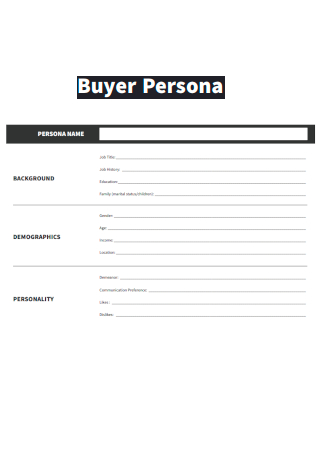
Simple Buyer Persona
download now -
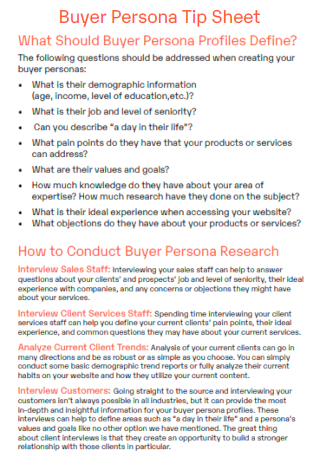
Buyer Persona Tip Sheet
download now -
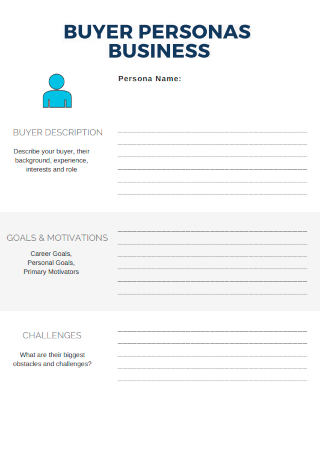
Business Buyer Persona
download now -
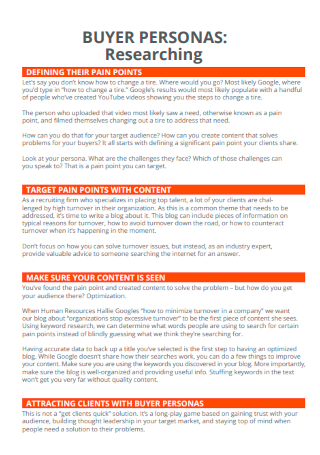
Buyer Persona Researching
download now -
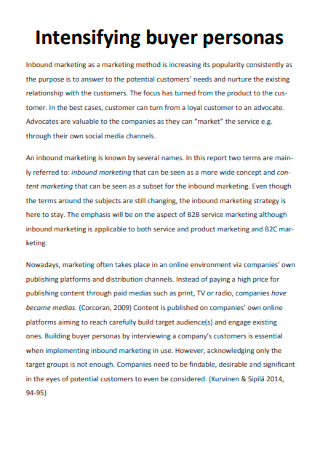
Intensifying Buyer Personas
download now -
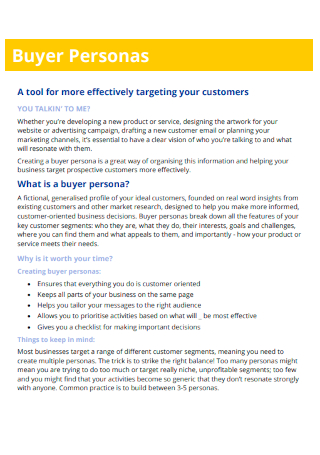
Printable Buyer Persona
download now -
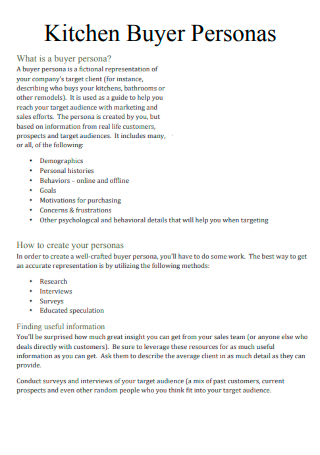
Kitchen Buyer Personas
download now
What Is a Buyer Persona?
A buyer persona is a document or record that represents the ideal customer for an organization according to market research and analysis that comes from accurate and available information about existing customers. When an organization plans to create a buyer persona, consider including different factors such as customer demographics, behavioral patterns, goals, motivations, and trends. The more detailed information that the company provides here, the better. Buyer personas provide sufficient information about the structure and insight of the company. By creating a detailed buyer persona, an organization can focus its time, resources, and efforts on guiding product development that allows for a clear alignment and understanding between departments. As a result, the company will be able to attract the most valuable market, clients, leads, and customers into the business. A buyer persona also goes by many names, including customer persona, marketing persona, and audience persona. Since the company cannot get to know all of its consumers personally, it can create a buyer persona to represent its customer base. Since a company caters to different audiences and sectors, the organization will have to create multiple buyer personas for its customers. Keeping the buyer persona in mind keeps the voice and the context to be consistent, starting from product development to the brand voice that the business utilizes in its social media marketing.
According to ITSMA and their article about the importance of developing customer personas, about 82 percent of companies using buyer personas show an improvement in their value proposition, while 90 percent of organizations say that they possess a clearer and better understanding of their customer base.
Essential Elements of a Buyer Persona
Each buyer persona that the organization creates serves as a guide that directs the business towards the most effective and efficient marketing strategies, content, formats, and delivery channels that the target market is utilizing. Without the help of buyer personas, organizations are wasting their time and resources navigating the marketplace. Since personas are tools for crafting and expressing business clarity, the components of the buyer persona are essential. The section below covers the different elements of a buyer persona with explanations and definitions of each section.
How To Compose a Buyer Persona Aligned with Company Goals
Defining a buyer persona is challenging at first glance. However, if the process is in sections that consist of manageable steps, individuals can move through them simply and conveniently to develop comprehensive and thoughtful personas that improve how the company markets and sells its products and services. Taking the entire process one step at a time guarantees that the business covers all areas without it being overwhelming. The section below consists of a guide to help teams create buyer personas at their convenience.
-
1. Research About the Buyer Personas
All reliable buyer personas rely on thorough research methods. Even if the organization says that they have a good idea of who their customers are, the business must take a look at the current clients and the consumers they wish to work with in the future. Begin the research by identifying existing clients. Make sure to ask relevant questions, including who contacted who, who made the final decision, their job position, and the status of their home life. Asking these questions helps the organization to start writing the buyer persona. Other tactics that the company can try include talking to customer-facing or customer service employees and clients. After gathering additional information about the customers, think about the products or services the company intends to sell or market in the future. To narrow down the choices, take a look at competitor markets. The company can also learn more about ideal buyer personas that the organization has not reached yet by researching how competitors reach success. Reflect on where the company sees itself in the future. The company looks at competitors to see how they are bringing the market in and check how buyers respond to the marketing. Another thing that the organization can do is to check analytics. This is the most concrete data that the organization has on its ideal buyers is through the analytics from the company website, social media accounts, and pay-per-click advertisements.
-
2. Segment the Buyer Personas
The research portion of the buyer persona is the most time-consuming portion of its creation. The next step involves organizing the information that the company has from its research. Begin by looking at similarities in the goals and challenges from the gathered information. These similarities will help teams to group customers together into more distinct sets of personas. After reviewing and organizing the research, determine how many personas the company needs to create. Start creating buyer personas with the market segments the company utilizes the most. The organization can always adjust and add personas when necessary. It is also helpful to segment buyers according to their industries and job titles to make the document more specific.
-
3. Develop a Name and Story for the Persona
After researching and deciding the different groups for a particular persona, you can start creating one. Start with painting a full picture of the persona and pulling out the different segments. Give the persona a name to help market and sell products or services personally. Doing this provides context to the group of individuals and their goals and motivations. A better understanding of these factors helps the organization interact with the market. In developing buyer personas, the more information you have, the better.
-
4. Focus on the Roles, Goals, and Challenges
After composing and organizing information for the buyer persona, identify the roles, goals, and challenges of each group as they are the most relevant elements that the sales and marketing teams will use going forward. Make sure that the content the marketing team incorporates in the persona involves relevant information about their job description and job title. Understanding the goals of the buyer persona becomes the key to giving the consumers personalized, unique, and helpful products and services. The persona must also identify the pain points that the group experiences, and how the organization can address them. The more challenges that the company can identify, the more opportunities the organization can develop to address these problems.
-
5. Use the Buyer Persona To Create Tailored Marketing and Sales Strategies
After the organization familiarizes itself with the contents of the buyer personas, develop sales and marketing strategies to tailor the group that is an excellent fit with the business. The document helps the organization to have an insight into the most qualified ways that prospects function, using the information to the advantage of the business. Work thoroughly to create a persona that makes audiences want to read them, putting its goals and challenges as the highlights.
FAQs
Why do you need a buyer persona?
Organizations need a buyer persona for an adequate understanding of the needs and wants of the customers. It enables the organization to tailor its sales and marketing strategies according to the preferences of customers, targeting specific groups of people.
How many buyer personas must an organization have?
There are no specific amounts of buyer personas that an organization must create. However, they should have diverse sets of personas ranging from three to eight.
How do you write a target persona?
When writing a target persona, make sure to have thorough research of the target audience. There must also be proper segments for each persona, identify the goals and pain points of the group, and then create the document.
The buyer persona allows organizations to have a more targeted approach when it comes to selling or marketing their products and services. Companies must take the time and effort to construct a comprehensive buyer persona to ensure that the products or services they sell to their consumers provide answers to their challenges or help them achieve their goals. When planning to create the buyer persona, the marketing and sales teams must take the time to produce coherent and detailed information about a particular consumer. Start developing a buyer persona for the organization by reading the article above and downloading from the selection of 20+ SAMPLE Buyer Persona in PDF from Sample.net.
